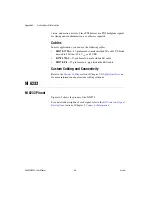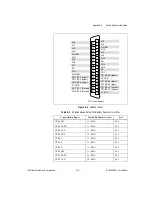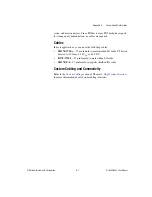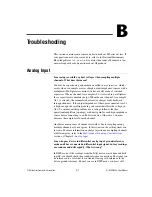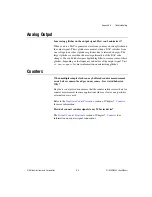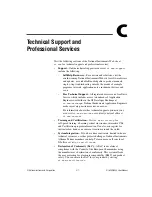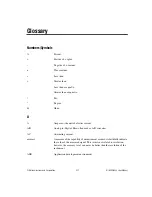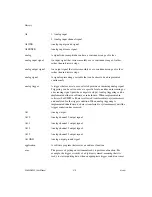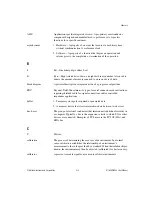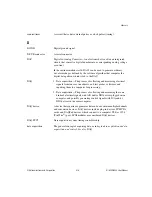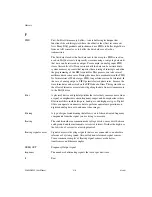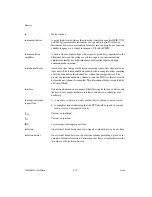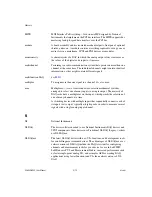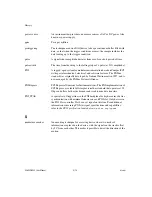
Glossary
G-4
ni.com
cascading
Process of extending the counting range of a counter chip by connecting to
the next higher counter.
CE
European emissions control standard.
channel
Pin or wire lead to which you apply or from which you read the analog or
digital signal. Analog signals can be single-ended or differential. For digital
signals, you group channels to form ports. Ports usually consist of either
four or eight digital channels.
clock
Hardware component that controls timing for reading from or writing to
groups.
CMOS
Complementary metal-oxide semiconductor.
CMRR
Common-mode rejection ratio—A measure of the ability of a differential
amplifier to reject interference from a common-mode signal, usually
expressed in decibels (dB).
common-mode rejection
The ability of an electronic system to cancel any electronic noise pick-up
that is common to both the positive and negative polarities of the input leads
to the instrument front end. Common mode rejection is only a relevant
specification for systems having a balanced or differential input.
common-mode signal
1. Any voltage present at the instrumentation amplifier inputs with
respect to amplifier ground.
2. The signal, relative to the instrument chassis or computer's ground, of
the signals from a differential input. This is often a noise signal, such
as 50 or 60 Hz hum.
connector
1. A device that provides electrical connection.
2. A fixture (either male or female) attached to a cable or chassis for
quickly making and breaking one or more circuits. A symbol that
connects points on a flowchart.
convert rate
Reciprocal of the interchannel delay.
count
The number of events, such as zero crossings, pulses, or cycles.
counter
1. Software. A memory location used to store a count of certain
occurrences.
2. Hardware. A circuit that counts events. When it refers to an instrument,
it refers to a frequency counter.



